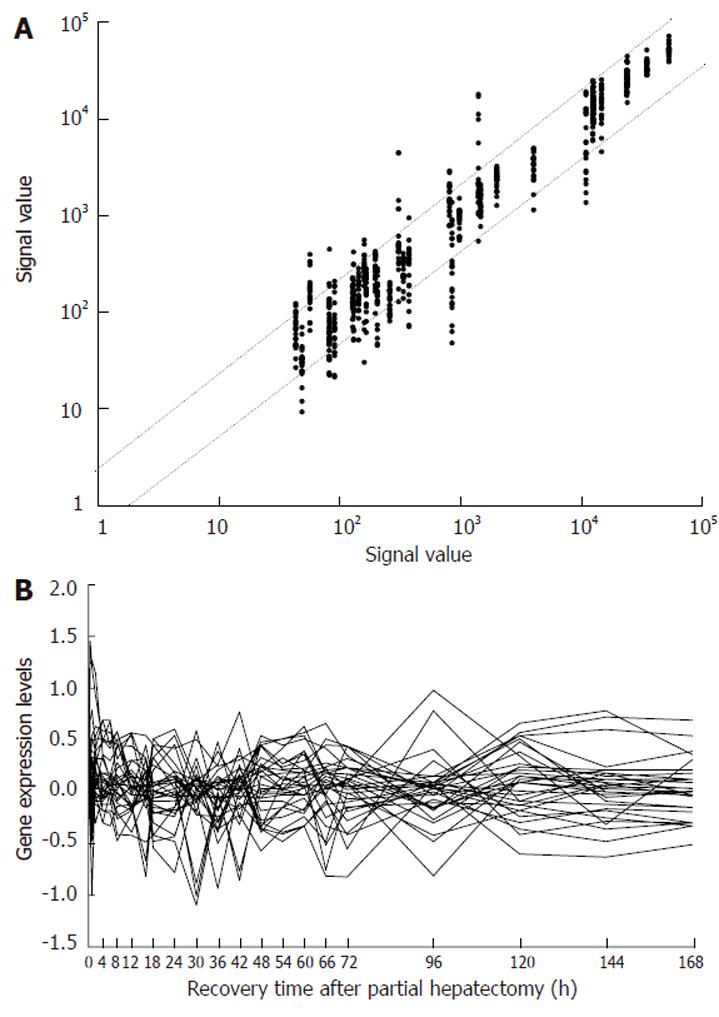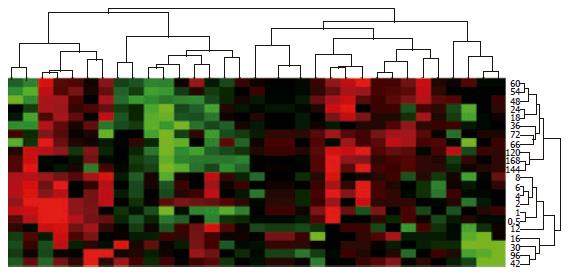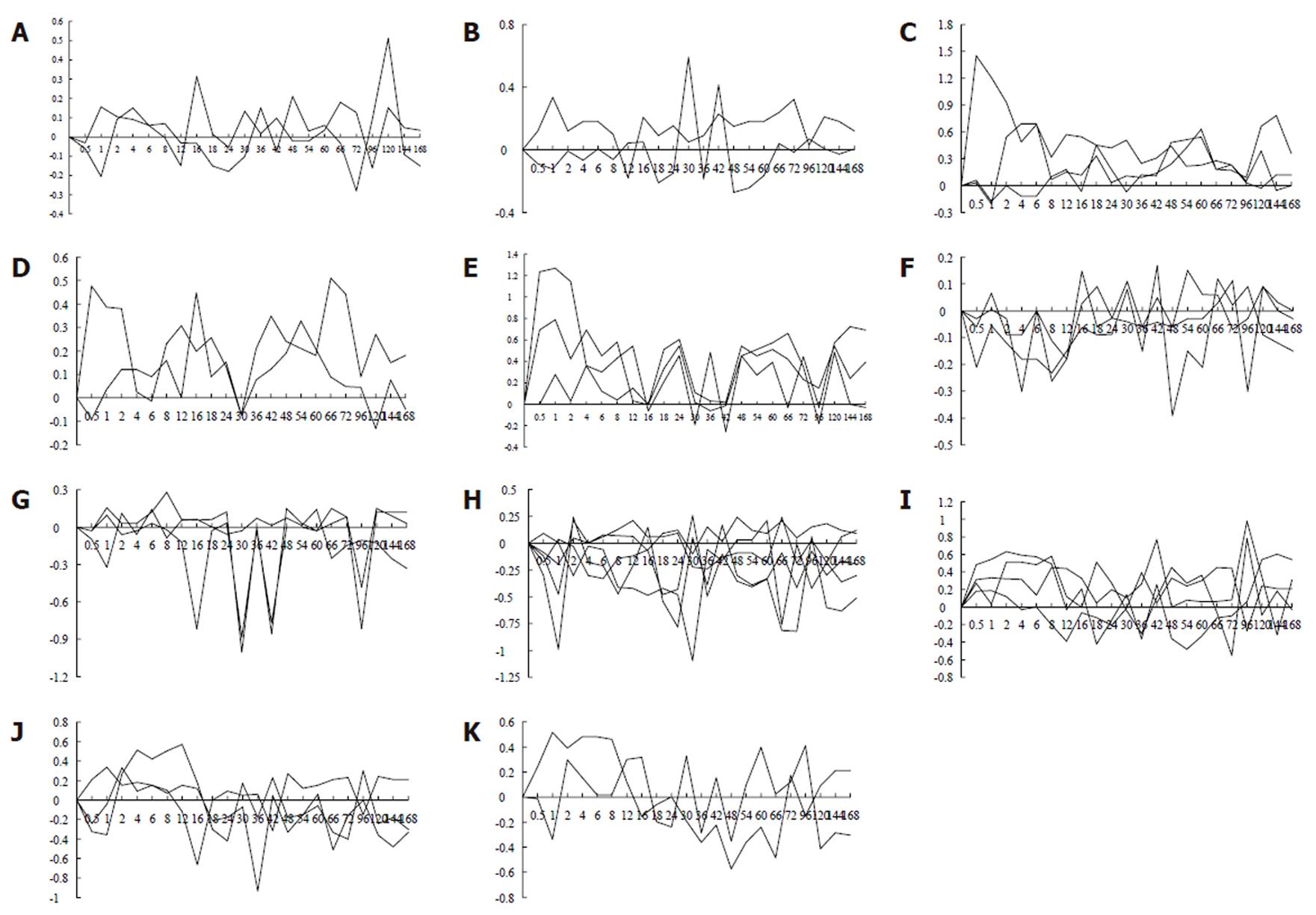Copyright
©2006 Baishideng Publishing Group Co.
World J Gastroenterol. Nov 21, 2006; 12(43): 6966-6972
Published online Nov 21, 2006. doi: 10.3748/wjg.v12.i43.6966
Published online Nov 21, 2006. doi: 10.3748/wjg.v12.i43.6966
Figure 1 Expression profiles of 32 genes associated with drug-induced liver diseases during liver regeneration.
A: The abundance and frequency of gene expression, each point represents the signal value of one gene at corresponding time point. The dots above bias represent the genes up-regulated by more than twofold, those under bias represent the genes down-regulated by more than twofold, and the ones between biases represent the genes meaningless alteration in expression. The farer the genes from the bias, the greater the folds of gene change; B: The expression changes of genes associated with LR.
Figure 2 The initial and total expression profiles of 32 genes associated with drug-induced liver diseases at each time point of liver regeneration.
Blank bars: Initial expressing gene number; Dotted bars: Total expressing; Grey bars: Up-regulated; White bars: Down-regulated.
Figure 3 Expression similarity and time relevance clusters of 32 genes associated with drug-induced liver diseases during liver regeneration.
Detection data of Rat Genome 230 2.0 array were analyzed by H-clustering. Red: Up-regulation genes; Green: Down-regulation; Black: No-sense in expression change; The upper and right trees respectively show expression cluster and time series cluster.
Figure 4 Expression patterns of 32 genes associated with drug-induced liver diseases during liver regeneration.
These genes exhibit 20 types of expression patterns. A-E: Up-regulation in expression; F-H: Down-regulation; I-J: Up/down-regulation mixed. X-axis represents recovery time after PH (h), Y-axis shows logarithm ratio of the signal values of genes at each time point to the control.
- Citation: Ning QJ, Qin SW, Xu CS. Expression patterns and action analysis of genes associated with drug-induced liver diseases during rat liver regeneration. World J Gastroenterol 2006; 12(43): 6966-6972
- URL: https://www.wjgnet.com/1007-9327/full/v12/i43/6966.htm
- DOI: https://dx.doi.org/10.3748/wjg.v12.i43.6966












